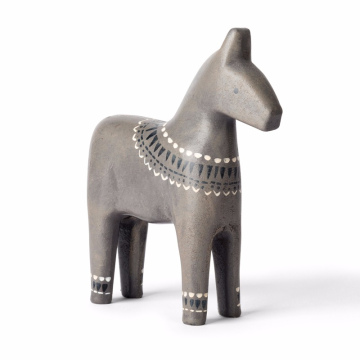Introduction to Spain's Rich Cultural Heritage
Spain boasts a diverse cultural heritage shaped by myriad historical influences, making it a captivating destination for those interested in understanding its complex identity. The rich tapestry of Spanish culture has been intricately woven over centuries, with significant contributions stemming from various epochs—including the Roman, Islamic, and Christian periods. Each of these historical influences has left an indelible mark on Spain's architecture, language, traditions, and customs.
The Roman Empire was one of the first to exert considerable influence over the Iberian Peninsula. Its extensive architectural achievements, such as aqueducts, amphitheaters, and roads, reflect the advanced engineering skills of the time. The remnants of Roman civilization can still be observed in cities like Mérida and Tarragona, which house remarkably preserved ruins that provide insight into life during a time of great cultural exchange.
Following the Roman era, the arrival of the Islamic civilization marked another transformative chapter in Spain's history. The Al-Andalus period, characterized by significant advancements in science, art, and philosophy, saw the construction of splendid structures such as the Great Mosque of Córdoba and the Alhambra in Granada. These historic sites exemplify the harmonious blending of different cultural elements and have contributed to Spain's reputation as a beacon of knowledge during the Middle Ages.
Finally, the Reconquista led to the resurgence of Christian influence, culminating in the unification of Spain under Catholic Monarchs. The subsequent constructions, including grand cathedrals and royal palaces, symbolized this shift. Sites such as the Sagrada Familia in Barcelona and the Cathedral of Santiago de Compostela are testaments to this rich confluence of historical influences that have crafted Spain's vibrant identity.
This overview of Spain's historic sites not only highlights their architectural splendor but also emphasizes their importance as reflections of the country's multifaceted past, inviting visitors to delve into the narratives embedded within these structures.
Must-Visit Historic Sites Across Spain
Spain is a country steeped in history, offering a myriad of captivating historic sites that reflect its rich cultural tapestry. Among the most prominent is the Alhambra in Granada, a UNESCO World Heritage site that showcases exquisite Islamic architecture and beautiful gardens. Originally a fortress, the Alhambra was transformed into a royal palace in the 13th century, and its intricate tilework and detailed stucco work narrate the Islamic influence during Spain's Nasrid dynasty. Visitors are often struck by the stunning views of the Sierra Nevada mountains, adding to the site's enchanting atmosphere.
Another must-visit landmark is the Sagrada Familia in Barcelona, a masterpiece designed by the renowned architect Antoni Gaudí. This basilica has been under construction since 1882 and is famous for its unique architectural style, which combines Gothic and Art Nouveau elements. Characterized by its towering spires and intricate facades, the Sagrada Familia is not only a religious site but also a symbol of Catalan identity. The basilica illustrates Gaudí's devotion to nature, with its design inspired by organic forms, making it a testament to human creativity and spirituality.
The Alcázar of Seville, a stunning example of Mudejar architecture, is another key historic site that deserves attention. Originally developed as a fortress by Muslim rulers, it later became the royal palace for Christian monarchs. The Alcázar is renowned for its beautiful gardens and elaborate tilework, which reflect the cultural blending that occurred throughout Spain's history. Each room within the palace tells a story of conquests, reigns, and the fusion of diverse cultural influences that have shaped Spain.
These historic sites, standing as vast repositories of Spain's past, encourage exploration and appreciation for the country's architectural heritage and cultural diversity. From the lush gardens of the Alhambra to the towering spires of the Sagrada Familia and the intricate designs of the Alcázar, these landmarks are essential for anyone seeking to understand the historical narrative of Spain.
Cultural Experiences at Historic Sites
Spain's rich historical tapestry can be best appreciated through the array of cultural experiences that its historic sites offer. From architectural marvels to archaeological treasures, visiting these locations provides an enriching journey into the country's heritage. Guided tours are a quintessential way to explore these sites, as they often include knowledgeable guides who share fascinating anecdotes and in-depth historical context. These tours typically cover significant landmarks such as the Alhambra in Granada and the Sagrada Familia in Barcelona, providing visitors with insights that go beyond mere observation.
Additionally, many historic sites host local events that reflect Spain's diverse cultural traditions. Festivals celebrating regional customs often take place in conjunction with visits to these sites, enhancing the overall experience. For instance, the Semana Santa (Holy Week) processions in Seville not only highlight the city’s grandeur but also immerse attendees in deep-rooted religious and cultural practices. In sites like Toledo, visitors can witness traditional crafts and local art exhibitions that further illuminate Spain's artistic evolution throughout the ages.
Immersive activities also play a significant role in deepening visitors' understanding of the culture. Some historic sites offer interactive workshops where guests can learn traditional Spanish cooking or participate in regional dance classes. Such engagements foster a connection to the customs and lifestyles of the local community, allowing visitors to experience Spain more intimately.
Overall, the cultural experiences available at Spain's historic sites contribute significantly to the understanding of the nation's evolution. By engaging with local traditions, participating in festivals, and joining guided tours, visitors not only explore Spain's past but become part of its ongoing narrative. Therefore, each visit is a chapter in the broader story of this vibrant nation.
Practical Tips for Exploring Spain's Historic Sites
Visiting Spain's historic sites can be an enriching experience, but careful planning enhances the journey. To make the most of your visit, consider the timing; spring and fall are ideal seasons due to milder weather and fewer crowds. This not only allows for more comfortable exploration but also provides an opportunity to immerse yourself in local festivities that showcase the cultural heritage of each region.
Creating a suggested itinerary is essential for navigating Spain's vast array of historic sites. Starting in major cities such as Madrid and Barcelona, travelers can explore renowned landmarks like the Royal Palace and the Sagrada Familia. From there, consider venturing to UNESCO World Heritage sites like the Alhambra in Granada or the historic town of Toledo. Spending two to three days in each location can offer an ideal balance of exploration and relaxation while allowing time to appreciate the depth of history exhibited in each site.
Transportation options are diverse, with trains offering convenient travel between major cities. Renowned for their efficiency, Spain's high-speed trains can drastically reduce travel time, allowing more time for sightseeing. Within cities, utilize public transport or walk where possible to appreciate the local atmosphere.
While exploring, it is crucial to engage respectfully with each site's cultural heritage. Photography guidelines may vary, so pay attention to signage that indicates where photographs are permitted. Additionally, maintaining the integrity of historical landmarks is paramount; refrain from touching or climbing on structures unless specifically allowed. Following local customs, such as observing quiet tones in sacred spaces, ensures that you show respect for the culture you are experiencing. Lastly, consider nearby attractions and accommodations that allow you to extend your exploration beyond the primary site, enriching your cultural journey through Spain.








